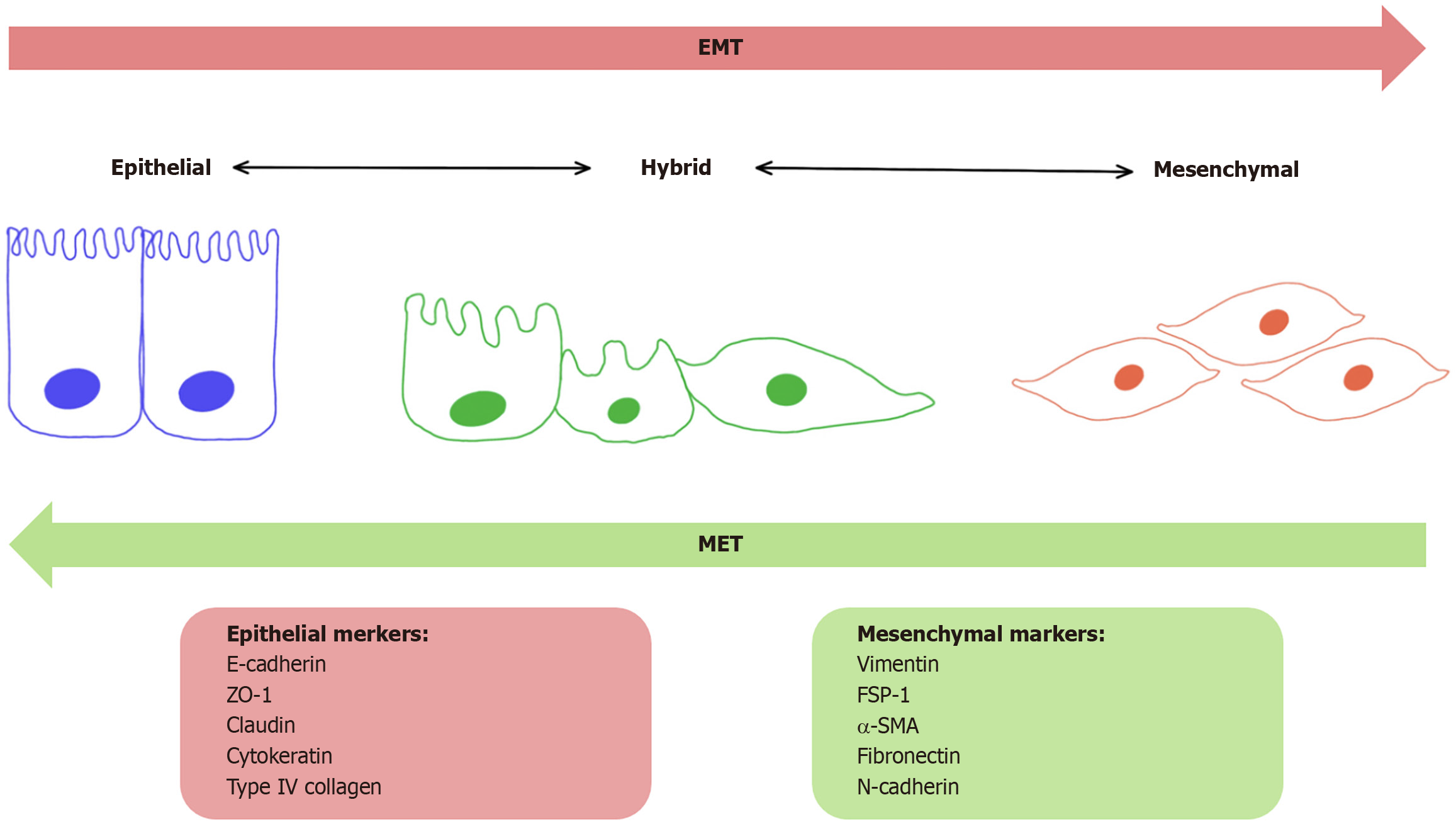Copyright
©The Author(s) 2025.
World J Clin Oncol. Jul 24, 2025; 16(7): 107339
Published online Jul 24, 2025. doi: 10.5306/wjco.v16.i7.107339
Published online Jul 24, 2025. doi: 10.5306/wjco.v16.i7.107339
Figure 1 Morphological changes and markers of epithelial-to-mesenchymal transition process.
Epithelial-to-mesenchymal transition (EMT) is characterized by the transition of epithelial cells, which typically exhibit apical-basal polarity and tight cell-cell adhesion, into mesenchymal-like cells with enhanced migratory and invasive capabilities. Morphological alterations include the loss of epithelial cobblestone-like morphology and the acquisition of an elongated, spindle-shaped phenotype. At the molecular level, EMT is marked by the downregulation of epithelial markers such as E-cadherin and the upregulation of mesenchymal markers including N-cadherin, vimentin, and fibronectin. These changes collectively contribute to increased motility, invasiveness, and resistance to apoptosis, facilitating cancer progression and metastasis. EMT: Epithelial-to-mesenchymal transition; FSP-1: Ferroptosis-suppressor-protein 1; MET: Metastasis; SMA: Smooth muscle actin; ZO-1: Zonula occludens-1.
- Citation: Çakal S, Er Urgancı B, Şimşek S. Key players in the breast cancer microenvironment: From fibroblasts to immune cells. World J Clin Oncol 2025; 16(7): 107339
- URL: https://www.wjgnet.com/2218-4333/full/v16/i7/107339.htm
- DOI: https://dx.doi.org/10.5306/wjco.v16.i7.107339









